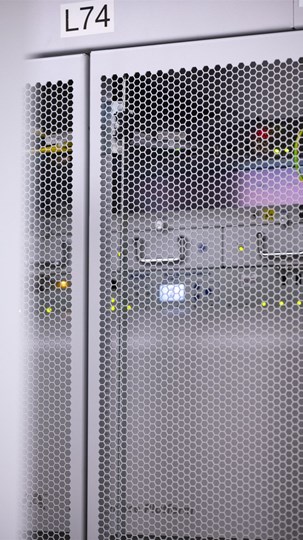Media and broadcasting companies are growing exponentially, especially in terms of the amount of data produced. For this reason, more and more organisations are opting for cloud technology. This makes them not only more future-proof but also better armed against cybercrime. Yet risks still lurk, especially as cybercriminals become increasingly ingenious. Organisations will need to commit to smart ways to better guard against cyber attacks. Collaboration in a media ecosystem is part of this.
“What is the biggest challenge you think our clients face?" This is a question that a colleague asked me recently, I couldn’t answer in one sentence. As Business Developer at LCL Data Centers, I focus primarily on the media and broadcasting industry. A dynamic sector that has developed considerably in recent years. Not only in the way that digitization has turned things upside down, but also how we relate to the world around us - and thus also the media.
These changes have created tremendous growth in digital entertainment. Consequently, media and broadcasting companies also need much more data capacity. As a data center, we notice this all too well: organisations from far and wide want to use LCL's colocation solutions, in order to be guaranteed optimum availability and scalability in the heart of Europe. In particular, with sustainability increasingly seen as a collective mission, the benefits of outsourcing your data center are clearly evident.
A data center company like LCL provides organisations with on-demand access to cloud technology. This allows for faster data exchange, improved storage capacity and more efficient distribution networks - all important aspects for providing a smooth experience for mediausers. Cloud technology also allows companies to quickly develop content and distribute it efficiently across multiple platforms around the world. With cloud-based production tools, media and broadcasters are no longer limited to expensive and rigid on-premise systems, but can now produce, edit, manage and analyse their content anywhere in the world. This development was one of the reasons LCL hosted a talk show in 2022 that focused on digital transformation for media and broadcasting organisations.
At the same time, the rise of cloud services, of various types of broadband services and of digital data in general among media and broadcast organisations also raises questions concerning cybersecurity. It's something I have a lot of conversations about with our clients. Cybercrime is a growing problem. For example, more than 50,000 cybercrimes were reported to the federal police in Belgium in the first half of 2022. As an organisation, you don't want to have to deal with disruptions and malfunctions: that not only costs a lot of money, but also causes reputational damage. Yet today, you are more digitally vulnerable than ever due to parties using DDoS attacks, ransomware, malware or other cybercrime to take organisations down, hold them hostage or rob them of data.


It is therefore imperative for media and broadcasting organisations to take a proactive stance in protecting their digital assets. Notably, these five forms of cybercrime are the most common and will become (more) prevalent in the coming year.
An "advanced persistent threat" is a cyber attack in which the intruder - often after long and careful preparation - gains unauthorised access to a network or system and then remains under the radar for an extended period of time while capturing sensitive data or performing other malicious activities.
APTs can be particularly difficult to detect and protect you from, because they are designed to evade detection and do so over a longer period of time. Arming yourself as an organisation against APTs requires a comprehensive security strategy. It consists of a combination of network monitoring, threat intelligence, user education and advanced security technologies.
Deepfake attacks are AI-based cyber attacks that use sophisticated algorithms to create highly realistic manipulated videos, images or audio recordings. These manipulated media can be used to spread disinformation or impersonate individuals for malicious purposes. Deepfake technology is based on machine learning algorithms and synthesises large amounts of data, such as facial expressions, speech patterns and other visual and auditory cues.
Securing against deepfake attacks is a challenge because they are difficult to detect and can spread quickly through social media and other online platforms. Techniques for detecting deepfakes include using forensic analysis tools to identify media inconsistencies or analysing the metadata accompanying the file.
Phishing is a form of cybercrime in which an attacker uses fraudulent emails, messages or websites to deceive individuals. In this way, they want to obtain sensitive information, such as passwords, credit card numbers or personal identification numbers. To do this, they generally use a fake login page or a fake website that appears legitimate.
It can be prevented by being careful with suspicious emails, messages or websites and verify legitimacy before providing sensitive information. In addition, using strong passwords and enabling two-factor authentication can provide additional security against phishing attacks.
DDoS (Distributed Denial of Service) attacks are a type of cyber attack in which a large number of computer systems or devices are deployed to deliberately flood a server, website or network with a huge amount of traffic, causing it to become overloaded and unavailable to users.
Security against DDoS attacks usually involves a combination of measures, such as monitoring network traffic, using firewalls and intrusion prevention systems to block suspicious traffic, using content delivery networks (CDNs) to distribute traffic, and deploying a specialised DDoS mitigation service that can filter malicious traffic while letting legitimate traffic through.
Double Extortion Ransomware means that, in the cyber attack, first the - preferably sensitive - (customer) data is recovered by the attackers and everything is then encrypted afterwards. The attackers can then demand money from the company to make the blocked environment available again AND threaten to make the data public if payment is not made. This prevents the victim from simply using a recent backup to bypass the ransomware.
In a Triple Extortion Ransomware attack, the cyber attackers use the same procedure, but also go to the victim's customers, whose sensitive information they have obtained, to demand payment not to make this data public. That way, they can cash in at multiple levels.
Now, you’re wondering of course: Robert, how can media and broadcast organisations guard against this then? The answer to this is simple but effective: By fighting together. For example, we see more and more media companies putting their heads together to exchange experiences, insights and best practices in the field of cybersecurity, e.g. through initiatives such as Medianet Vlaanderen. This we can only encourage.
I would also like to highlight the benefits of LCL here, of course. A data center company like LCL provides valuable support in the fight against cybercrime with its comprehensive, high-performance security systems. We deploy multiple security layers, which are systematically monitored and optimised based on internationally recognised certifications . This makes it extremely difficult for Intruders to get in.
In addition, LCL's data centers house specialised cybersecurity companies. This allows a media party to use all those parties with one cross-connect. This leads to a security and media ecosystem where all parties benefit and can support each other's services. One example is NaWas, a DDoS wash. Everything is internal, which creates an extra layer of security, so to speak.
There are also a multitude of security solutions available, such as those from CDN providers and carriers. LCL adopts a neutral role in this and helps to provide solutions and technologies within our data centers. We always put our customers first in this regard: in line with our customer intimacy strategy. In this respect, we set ourselves apart from other data centers by focusing on ecosystems: we truly believe in the power of collaboration.
Going back to the question I started this blog with, there is one thing I can answer with certainty: It is not a case of there being one challenge but, rather, one solution. So: Benefit from a media ecosystem, go for high-quality cybersecurity and choose LCL's data center services. Together we make the media world a more secure place!
Interested in our services, have questions or just want to exchange some ideas? You can contact us at [email protected].